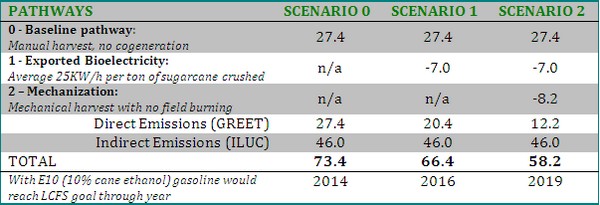For months the ethanol industry has been working with the California Air Resources Board (CARB) to update their calculations of ethanol’s emissions reductions. A victory has finally been achieved as California has updated its calculations of sugarcane ethanol’s emission reductions. The Brazilian Sugarcane Industry Association (UNICA) welcomed the announcement.
Joel Velasco, UNICA’s chief representative for North America, said, “UNICA applauds CARB’s decision to revisit the data. The new proposal recognizes the science and gives reasonable credits to the mechanization of the sugarcane harvest, as well as the generation of bioelectricity with the burning of sugarcane bagasse.”
In March of this year, CARB approved its Low Carbon Fuel Standard (LCFS), the first in the world, which aims at reducing the “carbon intensity” of all fuels used in the state. Beginning in 2011, California’s LCFS will reduce the carbon intensity of fuels, reaching at least a 10% reduction by 2020.
The new analysis released by CARB allows Brazilian ethanol to receive a credit of more than 15 gCO2/MJ, due to the use of bioelectricity from sugarcane cogeneration (7 gCO2/MJ) and the mechanization of sugarcane harvest (8.2 gCO2/MJ). See table below.

The general public will have until August 19 to submit any comment they might have about the new credits given to sugarcane ethanol. On August 5, 2009 there will be a public hearing in California about this issue.
UNICA’s next goal is to continue to work to change the ethanol calucations related in indirect land use.

